世界を見据え、日本人としての気概を持って生きた明治の知識人。
茨城岡倉天心記念室、
福井県と岡倉天心、
横山大観、
岡倉天心全集、
朗読 [茶の本 (一部)] 、
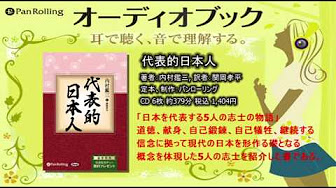
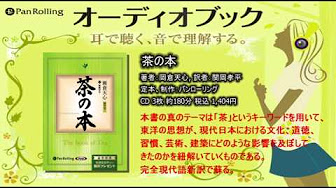
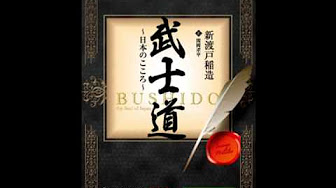
岡倉天心(Okakura Tenshin)
English
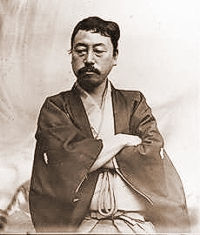
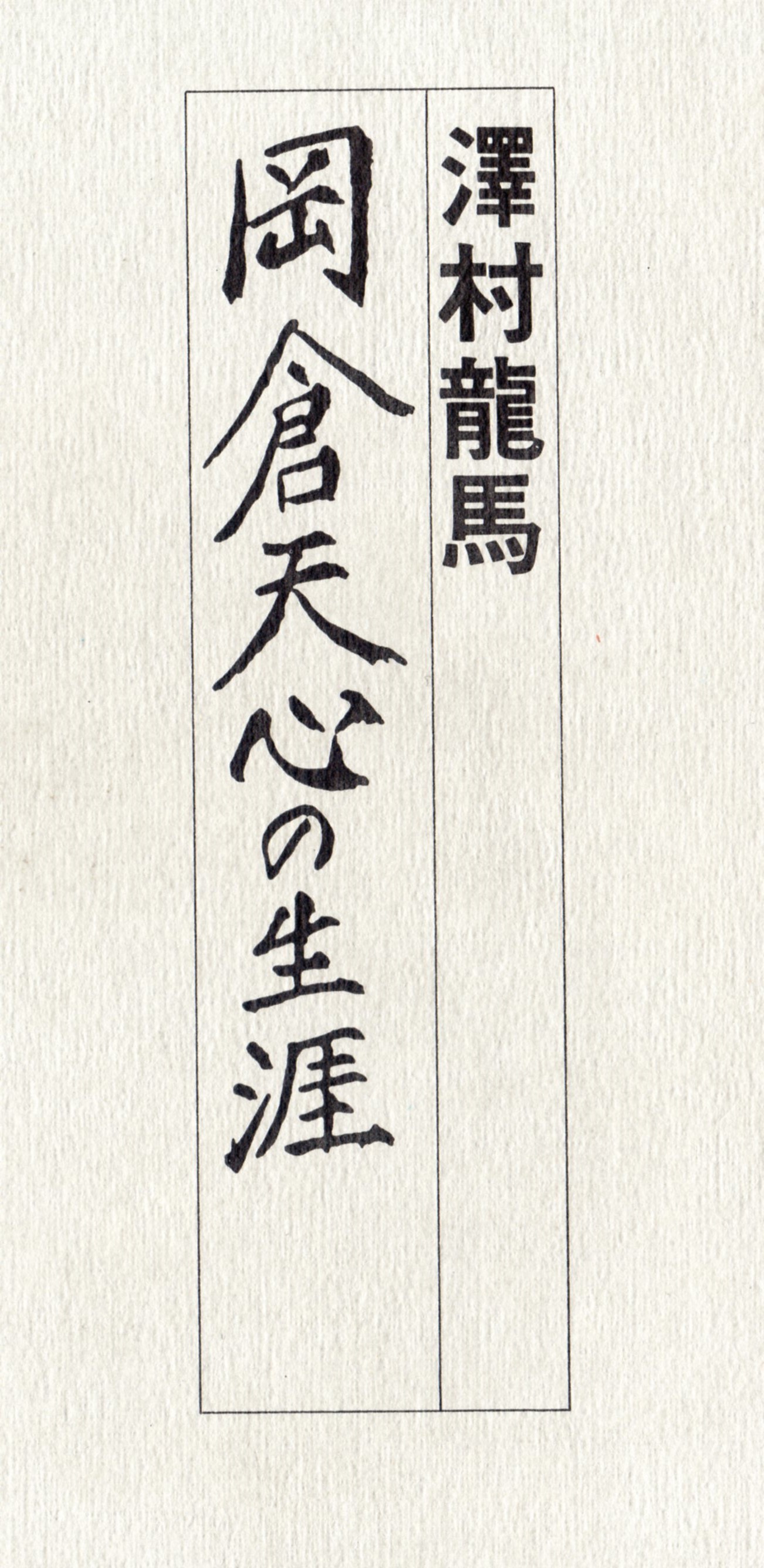
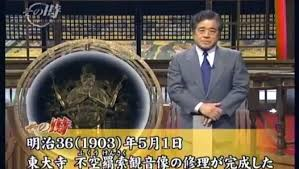

岡倉天心、
2013 映画「天心」 2時間2分 予告編
(その時歴史が動いた】〜岡倉天心・廃仏毀釈からの復興〜
2013 映画「天心」 2時間2分 予告編
|
出典:フリー百科事典
岡倉 天心(おかくら てんしん、1863年2月14日(文久2年12月26日) - 1913年(大正2年)9月2日)は、日本の思想家、文人。本名は岡倉覚三(かくぞう)。幼名は岡倉角蔵。
人物
福井藩の武家の子として横浜に生まれる。東京美術学校(現・東京藝術大学の前身の一つ)の設立に大きく貢献し、また日本美術院を創設した。近代日本における美術史学研究の開拓者で、英文による著作での美術史家、美術評論家としての活動、美術家の養成、ボストン美術館中国・日本美術部長といった多岐に亘る啓蒙活動を行い、明治以降における日本美術概念の成立に寄与した。「天心」は岡倉が詩作などの際に用いた号であるが、生前には「岡倉天心」と呼ばれることはほとんどなく、本人はアメリカでも本名の岡倉覚三 (Okakura Kakuzo) で通していた[1]。
福井藩の下級藩士の父・岡倉勘右衛門は、藩命で武士の身分を捨て、福井藩が横浜に開いた商館「石川屋」(現・横浜開港記念会館)の貿易商となり、その商店の角倉で生まれたことから、覚三は当初「角蔵」と名付けられた。9歳の時、妹てふを出産した母このが産褥熱で死去。その葬儀が行われた長延寺(現・オランダ領事館跡)に預けられ、そこで漢籍を学び、横浜居留地に宣教師ジェームス・バラが開いた英語塾で英語も学んだ。弟の岡倉由三郎は英語学者。東京開成所(のちの官立東京開成学校、現・東京大学)に入所し、政治学・理財学を学ぶ。英語が得意だったことから同校講師のアーネスト・フェノロサの助手となり、フェノロサの美術品収集を手伝った。16歳のとき、大岡忠相の末裔でもある13歳の基子と結婚する。1882年(明治15年)に専修学校(現在の専修大学)の教官となり、専修学校創立時の繁栄に貢献し学生達を鼓舞した。専修学校での活躍は、文部省専門学務局内記課に勤めていたころである。また専修学校の師弟関係で浦啓一も岡倉と出会い、岡倉の指導によりその一生に決定的な影響を受けた。
1890年(明治23年)から3年間、東京美術学校でおこなった講義「日本美術史」は日本(の美術史学)における日本美術史叙述の嚆矢とされる。
東京都台東区に岡倉天心記念公園(旧邸・日本美術院跡)がある。また、ニューヨークで英語で「茶の本」を出版して100年にあたる2006年の10月9日に、岡倉が心のふるさととしてこよなく愛した福井県の大本山永平寺において“岡倉天心「茶の本」出版100周年記念座談会”が行われた。そして岡倉の生誕150年、没後100年を記念して、福井県立美術館では2013年11月1日から12月1日まで「空前絶後の岡倉天心展」を開催している。本展覧会では、およそ100年振りに、旧フェノロサコレクションが集結し、他にも近代日本画を代表する名品が展示されている。
来歴
家族
父の岡倉覚右衛門は福井藩の下級武士ながら商才に長けていたことから、福井藩の横浜商館「石川屋」の手代務に命じられ、石川屋善右衛門と名を改め、商人となった。廃藩置県により石川屋が廃業となると、東京・日本橋蛎殻町にあった福井藩の下屋敷跡で旅館「岡倉旅館」を開業。[2]
母のこのは福井県出身で、4人の娘を残して前妻を亡くした覚右衛門の後妻として29歳で結婚。165cmの長身だったという。長男・港一郎(16歳で死亡)、次男・角蔵(天心)、三男・由三郎、五女・蝶子を産むが、37歳で死亡。兄の港一郎が脊椎カリエスで手がかかったため、角蔵は橋本左内の遠縁にあたる乳母に育てられた。[2]
妻の基子との間に生まれた長男の岡倉一雄は朝日新聞記者で岡倉覚三の伝記をまとめた。孫(一雄の子)の岡倉古志郎は非同盟運動にも関わった国際政治学者。曾孫(古志郎の子)長男の岡倉徹志は中東研究者。玄孫(徹志の子)長男の岡倉禎志は写真家。玄孫(徹志の子)次男の岡倉宏志は人材育成。西洋史学者の岡倉登志は曾孫。
岡倉家の祖先は、浅井長政が有名な近江国の戦国大名・浅井氏の一門であると言う。
逸話
- 1903年(明治36年)、岡倉は米国ボストン美術館からの招聘を受け、横山大観、菱田春草らの弟子を伴って渡米。羽織・袴で一行が街の中を闊歩していた際に1人の若い米国人から冷やかし半分の声をかけられた。「おまえたちは何ニーズ? チャイニーズ? ジャパニーズ? それともジャワニーズ?」。そう言われた岡倉は「我々は日本の紳士だ、あんたこそ何キーか? ヤンキーか? ドンキーか? モンキーか?」と流暢な英語で言い返した。
- <原文>
- "What sort of nese are you people? Are you Chinese, or Japanese, or Javanese?"
- "We are Japanese gentlemen. But what kind of key are you? Are you a Yankee, or a donkey, or a monkey?" [15]
- 岡倉の残したメモの中に「第一・四十歳にて九鬼内閣の文部大臣となる、第二・五十にして貨殖に志す、第三・五十五にして寂す」と将来設計を記したものがあり、当時文部官僚だった九鬼隆一との蜜月が偲ばれる。[16]
- 当初は岡倉を引き立てた上司である文部官僚の九鬼隆一男爵の妻・波津子(九鬼周造の母)との接近について彼の更迭との関連も噂され、一部で好奇の対象となった。(美術学校騒動)
著作(原文)
- 『The Ideals of the East-with special reference to the art of Japan』 1903年 ジョン・マレー書店(ロンドン)『東洋の理想』
- 『The Awakening of Japan』 1904年 センチュリー社(ニューヨーク)及びジョン・マレー社(ロンドン)『日本の目覚め』
- 『THE BOOK OF TEA』 1906年 フォックス・ダフィールド社(ニューヨーク)
『茶の本』 対訳本は、講談社インターナショナルと、「対訳ニッポン双書 茶の本」IBCパブリッシングほか。
- 『The Awakening of the East』 1902年稿 『東洋の目覚め』 当時未公開
著作(新版)
- 『岡倉天心全集 (全8巻別巻1)』 平凡社、1979年-1981年
- 『東洋の理想 日本の覚醒 東洋の覚醒』 佐伯彰一・桶谷秀昭・橋川文三訳、平凡社東洋文庫、1983年
- 『日本美術史』 平凡社ライブラリー、2001年。この2冊は「全集」からの単行版
- 『東洋の理想』 講談社学術文庫、1986年
- 『日本の覚醒』 講談社学術文庫、2014年9月
- 『茶の本』 村岡博訳 岩波文庫
- 『内村鑑三 岡倉天心 近代浪漫派文庫4』 新学社、2004年。浅野晃訳版「東洋の理想」ほか
- 『茶の本 岡倉天心コレクション』 ちくま学芸文庫、2012年。英文3部作を併録、斎藤美洲ほか訳
伝記・研究
- 宮川寅雄 『岡倉天心』 日本美術史叢書:東京大学出版会、1956年
- 松居直『岡倉天心』実業之日本社、不明。
- 斎藤隆三 『岡倉天心』 吉川弘文館〈人物叢書〉、1960年(新装版刊)
- 大岡信 『岡倉天心』 朝日新聞社、1975年/朝日選書、1985年
- 『岡倉天心 人と思想』 橋川文三編、平凡社 1982年
- 松本清張 『岡倉天心 その内なる敵』 新潮社、1984年/河出文庫、2013年
- 『宝石の声なる人に プリヤンバダ・デーヴィーと岡倉覚三 愛の手紙』(大岡信/大岡玲編訳)、平凡社ライブラリー、1997年
- 坪内隆彦 『岡倉天心の思想探訪―迷走するアジア主義』勁草書房、1998年
- 木下長宏 『岡倉天心』 ミネルヴァ書房〈日本評伝選〉 2005年
- ワタリウム美術館編集 『岡倉天心 日本文化と世界戦略』平凡社 2005年
- 岡倉登志 『世界史の中の日本 岡倉天心とその時代』 明石書店 2006年
- 『茶の本の100年 岡倉天心国際シンポジウム』 松岡正剛・磯崎新・熊倉功夫ほか 小学館スクウェア、2007年
- 大井一男 『美術商<アートディーラー> 岡倉天心』 文芸社 2008年
- 大原富枝 『ベンガルの憂愁 岡倉天心とインド女流詩人』 ウェッジ文庫 2008年
- 北康利 『九鬼と天心』 PHP研究所 2008年
- 岡倉登志『曾祖父覚三 岡倉天心の実像』 宮帯出版社 2013年
映画
脚注
- ^ 大和田範子「ボストン美術館に見る岡倉天心残像:2011年の「茶道具展」をもとに」『年報人間科学』34、大阪大学大学院人間科学研究科社会学・人間学・人類学研究室、2013、pp.194, 207(参照:[1])
- ^ a b c d e f g h i j k 『岡倉天心物語』新井恵美子、神奈川新聞、2004
- ^ 博物館学芸委員任命新聞集成明治編年史. 第七卷、林泉社、1936-1940
- ^ 帝国博物館新聞集成明治編年史. 第七卷、林泉社、1936-1940
- ^ 大博覧会美術部審査官任命新聞集成明治編年史. 第七卷、林泉社、1936-1940
- ^ 日本帝国美術歴史、農商務省で編纂新聞集成明治編年史. 第十卷、林泉社、1936-1940
- ^ 岡倉覚三とビゲロー大阪で歓迎会新聞集成明治編年史. 第11卷、林泉社、1936-1940
- ^ アメリカでの教え子の1人に、ラングドン・ウォーナーがいる。
- ^ アトリエの跡地は現在、茨城大学五浦美術文化研究所となっている(「五浦海岸」の項参照)。
- ^ よみうり抄新聞集成明治編年史. 第12卷、林泉社、1936-1940
- ^ 美術審査委員会委員決定新聞集成明治編年史. 第12卷、林泉社、1936-1940
- ^ 岡倉天心の義侠新聞集成明治編年史. 第12卷、林泉社、1936-1940
- ^ 明治44年の美術界新聞集成明治編年史. 第14卷、林泉社、1936-1940
- ^ 文展審査委員新聞集成明治編年史. 第14卷、林泉社、1936-1940
- ^ 斎藤 兆史『英語達人列伝―あっぱれ、日本人の英語』(中公新書)
- ^ 北康利「九鬼と天心」(PHP研究所)
関連項目
外部リンク
|
| 図画取調掛 |
|
|
| 東京美術学校 |
- 校長事務取扱 浜尾新 1887-1890
- 校長心得 岡倉覚三 1890
- 校長 岡倉覚三 1890-1898
- 校長兼務 高嶺秀夫 1898
- 校長心得 久保田鼎 1898-1900
- 校長 久保田鼎 1900-1901
- 校長 正木直彦 1901-1932
- 校長事務取扱 赤間信義 1932
- 校長 和田英作 1932-1936
- 校長事務取扱 岡田三郎助 1936
- 校長 芝田徹心 1936-1940
- 校長 沢田源一 1940-1944
- 校長事務取扱 永井浩 1944
- 校長 上野直昭 1944-1949
- 校長事務取扱 上野直昭 1949
- 校長 村田良策 1949-1952
|
|
音楽取調掛
(1885-1886音楽取調所) |
- 御用掛 伊沢修二 1879-1881
- 掛長 伊沢修二 1881-1885
- 所長 伊沢修二 1885-1886
- 主幹 青木保 1886
- 主幹 神津専三郎 1886-1887
|
|
東京音楽学校
(1893-1899高等師範
学校附属音楽学校) |
- 幹事 神津専三郎 1887-1888
- 校長 伊沢修二 1888-1891
- 校長心得 神津専三郎 1891
- 校長 村岡範為馳 1891-1893
- 主事 上原六三郎 1893-1898
- 主事 矢田部良吉 1898-1899
- 校長心得 渡辺龍聖 1899
- 校長 渡辺龍聖 1899-1902
- 校長 大島義脩 1902-1904
- 校長兼任 高嶺秀夫 1904-1907
- 校長 湯原元一 1907-1917
- 校長 茨木清次郎 1917-1918
- 校長 村上直次郎 1918-1928
- 校長 乗杉嘉寿 1928-1945
- 校長事務取扱 田中耕太郎 1945-1946
- 校長 小宮豊隆 1946-1949
- 校長事務取扱 上野直昭 1949
- 校長兼任 加藤成之 1949
|
|
| 東京芸術大学 |
- 学長事務取扱 上野直昭 1949
- 初代学長 上野直昭 1949-1961
- 第2代 小塚新一郎 1961-1969
- 第3代 福井直俊 1969-1979
- 第4代 山本正男 1979-1985
- 第5代 藤本能道 1985-1989
- 第6代 平山郁夫 1989-1995
- 第7代 澄川喜一 1995-2001
- 第8代 平山郁夫 2001-2005
- 第9代 宮田亮平 2005-
|
|
|
|
|
TOP
Okakura Kakuzō

Okakura Kakuzō (岡倉 覚三?, February 14, 1862 – September 2, 1913) (also known as 岡倉 天心 Okakura Tenshin) was a Japanese scholar who contributed to the development of arts in Japan. Outside of Japan, he is chiefly remembered today as the author of The Book of Tea.[1]
Biography
Born in Yokohama to parents originally from Fukui, Okakura learned English while attending a school operated by Christian missionary, Dr. Curtis Hepburn. At 15, he entered Tokyo Imperial University, where he first met and studied under Harvard-educated professor Ernest Fenollosa. In 1889, Okakura co-founded the periodical Kokka.[2] In 1887[3] he was one of the principal founders of the Tokyo School of Fine Arts (東京美術学校 Tōkyō Bijutsu Gakkō), and a year later became its head, although he was later ousted from the school in an administrative struggle. Later, he also founded the Japan Art Institute with Hashimoto Gahō and Yokoyama Taikan. He was invited by William Sturgis Bigelow to the Museum of Fine Arts, Boston in 1904 and became the first head of the Asian art division in 1910.
Okakura was a high-profile urbanite who had an international sense of self. In the Meiji period he was the first dean of the Tokyo Fine Arts School (later merged with the Tokyo Music School to form the current Tokyo University of the Arts). He wrote all of his main works in English. Okakura researched Japan's traditional art and traveled to Europe, the United States, China and India. He emphasised the importance to the modern world of Asian culture, attempting to bring its influence to realms of art and literature that, in his day, were largely dominated by Western culture.[4]
His book on Asian artistic and cultural history, "The Ideals of the East with special reference to the Art of Japan (1903)", published on the eve of the Russo-Japanese War, is famous for its opening paragraph in which he sees a spiritual unity throughout Asia, which distinguishes it from the West
"Asia is one. The Himalayas divide, only to accentuate, two mighty civilisations, the Chinese with its communism of Confucius, and the Indian with its individualism of the Vedas. But not even the snowy barriers can interrupt for one moment that broad expanse of love for the Ultimate and Universal, which is the common thought-inheritance of every Asiatic race, enabling them to produce all the great religions of the world, and distinguishing them from those maritime peoples of the Mediterranean and the Baltic, who love to dwell on the Particular, and to search out the means, not the end, of life."
In his subsequent book "The Awakening of Japan", published in 1905 (after Japan's success in the Russo-Japanese war) he argued that "the glory of the West is the humiliation of Asia". This was an early expression of Pan-Asianism. In this book Okakura also noted that Japan's rapid modernization was not universally applauded in Asia ″we have become so eager to identify ourselves with European civilization instead of Asiatic that our continental neighbors regard us as renegades—nay, even as an embodiment of the White Disaster itself."
In Japan, Okakura, along with Fenollosa, is credited with "saving" Nihonga, or painting done with traditional Japanese technique, as it was threatened with replacement by Western-style painting, or "Yōga", whose chief advocate was artist Kuroda Seiki. In fact this role, most assiduously pressed after Okakura's death by his followers, is not taken seriously by art scholars today, nor is the idea that oil painting posed any serious "threat" to traditional Japanese painting. Yet Okakura was certainly instrumental in modernizing Japanese aesthetics, having recognized the need to preserve Japan's cultural heritage, and thus was one of the major reformers during Japan's period of modernization beginning with the Meiji Restoration.
Outside of Japan, Okakura had an impact on a number of important figures, directly or indirectly, who include Swami Vivekananda, philosopher Martin Heidegger, poet Ezra Pound, and especially poet Rabindranath Tagore and heiress Isabella Stewart Gardner, who were close personal friends of his.[5]
Works
- The Ideals of the East (London: J. Murray, 1903)
- The Awakening of Japan (New York: Century, 1904)
- The Book of Tea (New York: Putnam's, 1906) : [1]
See also
Notes
- Jump up ^ 'Ambassador of Tea Culture to the West' (biography of Okakura), Andrew Forbes and David Henley, The Illustrated Book of Tea (Chiang Mai: Cognoscenti Books, 2012).
- Jump up ^ Gosling, Andrew (2011). Asian Treasures: Gems of the Written Word. National Library of Australia. p. 77. ISBN 978-0-642-27722-0.
- Jump up ^ founding of Tokyo University of the Arts
- Jump up ^ Rupert Richard Arrowsmith, "The Transcultural Roots of Modernism: Imagist Poetry, Japanese Visual Culture, and the Western Museum System", Modernism/modernity Volume 18, Number 1, January 2011, 27-42. ISSN: 1071-6068.
- Jump up ^ Video of a Lecture discussing the importance of Japanese culture to the Imagists, London University School of Advanced Study, March 2012.
References
- Bharucha, Rustom. Another Asia: Rabindranath Tagore and Okakura Tenshin. New York: Oxford University Press, 2006. ISBN 0-19-568285-8.
- "We Must Do a Better Job of Explaining Japan to the World". Asahi Shimbun, August 12, 2005.
- Benfey, Christopher. The Great Wave: Gilded Age Misfits, Japanese Eccentrics, and the Opening of Old Japan. New York: Random House, 2003. ISBN 0-375-50327-7.
- Okakura Kakuzo, The Illustrated Book of Tea. Chiang Mai: Cognoscenti Books. 2012. ASIN: B009033C6M
- Westin, Victoria. Japanese Painting and National Identity: Okakura Tenshin and His Circle. Center for Japanese Studies University of Michigan (2003). ISBN 1-929280-17-3
External links
|